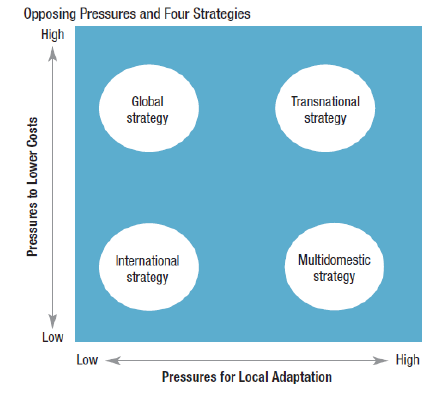May 2017 Q6 aii.
The chairman of Adama Group, which is large and diversified, has expressed concern about the inadequacies of the present voluminous monthly reports submitted to the Board. He acknowledges that it compares budget and actual results for all operations, and that it contains extensive reporting of non-financial indicators such as customer satisfaction and factory performance towards Total Quality Management (TQM). However, he regards much of this as operational detail, and considers that the report should place more emphasis on strategic issues.
A strategy consultant is currently assisting the Group to implement a Balanced Score card to effectively monitor the performance of managers.
Required:
Explain how Balanced Score card can be used to monitor and measure performance in Adama Group. (10 marks)
View Solution
The balanced score card approach is an approach to the provision of information to management to assist strategic policy formulation and achievement. The information provided may include both financial and non-financial elements, and cover areas such as profitability, customer satisfaction, internal efficiency and innovation.
The scorecard offers four perspectives on performance
- Financial
- Customer
- Innovation and learning
- Internal business processes
- Using Financial Perspective to Monitor and Measure Performance
How do should Adama Group look to shareholders. Financial performance measures indicate whether the company’s strategy, implementation, and execution are contributing to bottom-line improvement. Typical financial goals have to do with profitability, growth, and shareholder value. Adama group’s financial goals could simply be: to survive, to succeed, and to prosper. Survival can be measured and monitored by cash flow, success by quarterly sales growth and operating income by division, and prosperity by increased market share by segment and return on equity. - Customer Perspective: How Do Customers See Adama Group
Customers’ concerns tend to fall into four categories: time, quality, performance and service, and cost. To put the balanced scorecard to work, Adama Group should articulate goals for time, quality, and performance and service and then translate these goals into specific measures. Senior managers at Adama Group should therefore be assessed and monitored by percentage of sales from new products, on time delivery to customer (defined by customers), improvement on the company’s Total Quality Management, become customers’ supplier of choice through partnerships with them, and development innovative products tailored to customer needs. - Internal Business Perspective: What Must Adama Group Excel at?
Customer-based measures are important, but they must be translated into measures of what the company must do internally to meet its customers’ expectations. The internal measures for the balanced scorecard should stem from the business processes that have the greatest impact on customer satisfaction—factors that affect cycle time, quality, employee skills, and productivity.
Managers of Adama Group should attempt to identify and measure their company’s core competencies, the critical technologies needed to ensure continued market leadership, decide what processes and competencies they must excel at and specify measures for each. - Innovation and Learning Perspective: Can Adama Group Continue to Improve and Create Value?
The customer-based and internal business process measures on the balanced scorecard identify the parameters that the company considers most important for competitive success.
Adama Group innovation measures should focus on the group’s ability to develop and introduce standard products rapidly, products that the company expects will form the bulk of its future sales. Its manufacturing improvement measure should focus on new products; the goal is to achieve stability in the manufacturing of new products rather than to improve manufacturing of existing products. Adama Group should use the percent of sales from new products as one of its innovation and improvement measures. If sales from new products are trending downward, managers can explore whether problems have arisen in new product design or new product introduction.
In addition to measures on product and process innovation, Adama Group should overlay specific improvement goals for their existing processes.

